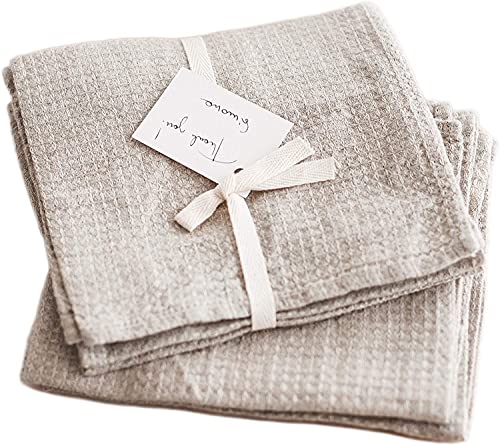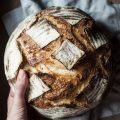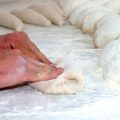Did someone say bugs? Yes, we did, and they’re in your sourdough starter! Much like fruit attracting fruit flies, your sourdough starter can attract the same sort of bugs. But what are these sourdough bugs called, and how do we get rid of them? Well, stick around for the full scope!

Table of Contents
- What Is A Sourdough Starter?
- Why Are Fruit Flies Attracted to Sourdough Starter?
- How To Protect Your Starter From Fruit Flies?
- Sourdough Bugs
- FAQs
What Is A Sourdough Starter?
A sourdough starter is a live culture consisting of wild yeast and bacteria that feed off the mixture of flour and water in your glass jar. Fresh flour and water are added twice a day to provide the live culture with fresh food.
When creating a sourdough starter, the process of capturing and nurturing the wild organisms can take some time, but once established, and with regular feedings, they’re there to stay.
Once the starter is ready to bake sourdough bread, the wild and natural yeasts will act as natural yeasts, in the sense that they will help the bread rise, as it releases carbon dioxide.
The best thing about sourdough recipes is that you don’t need commercial yeast to make the bread rise.
Why Are Fruit Flies Attracted to Sourdough Starter?
Frankly, fruit flies are attracted to any type of food source such as overripe fruit, debris in your kitchen drain, and of course, your sourdough starter.
Much like overripe or rotting fruit, your sourdough starter is constantly fermenting, which makes it a very delicious food source for the fruit flies.
Fruit flies seemingly appear from nowhere. However, they’re always around, hiding in your house. Normally, they tend to hang about in the kitchen, near the drain, or fruit bowl, desperately waiting for the fruit to rot.
And once you’ve introduced your sourdough starter to the kitchen, the fruit flies will immediately circle it, dipping their toes in whenever they get a chance!
How To Protect Your Starter From Fruit Flies?
There are many ways to keep your sourdough starter protected from fruit flies, and these include:
- Keeping your starter covered
- Placing your starter in a different container
- Storing it elsewhere
- Setting up a fruit fly trap
- Ensuring your kitchen is free from other food sources
Cover Your Starter
Maybe you made a sourdough fruit bread and suddenly noticed flies.
The best way to protect your starter from fruit flies is to make sure that its container is covered at all times.
There are a number of ways to cover your starter depending on whether you wish to allow some air into your starter or not.
If your starter is quite young, then it’s a good idea to let it breathe. Cover the starter with a coffee filter, or paper towel, and secure this with an elastic band or thick string.
You can also use the lid of your jar, just make sure you don’t screw it on super tight!
Store The Starter Elsewhere
To protect the starter from fruit flies getting in, place the jar into a microwave, or a yogurt maker. Cover with a lid, or close the microwave door, and this should keep your starter fruit fly free.
Additionally, you could always use a dough proofer to store your starter away from fruit flies. This allows your starter to comfortably ferment, without the annoying fruit flies jumping in.
If there’s nothing else you can think of, then try putting the jar in an oversized zip-loc bag, ensuring that the top is sealed, so that the fruit flies won’t get to it.
Of course, a matured sourdough starter can be stored in the fridge, effectively out of reach.
Set A Fruit Fly Trap
Setting a fruit fly trap is a great way to get rid of these pests once and for all.
You can easily make a trap by pouring apple cider vinegar into a dish, then pouring a layer of dish soap over the top of it. The fruit flies will flock to the vinegar but become trapped in the soapy liquid.
Remove Other Food Sources
To eliminate fruit flies from your kitchen, simply ensure that there are no food sources that are attracting these flies into your kitchen. Of course, that is a challenge in itself, since the kitchen is literally where food is supposed to reside.
However, if you wish to keep overripe bananas (for your sourdough banana bread, perhaps), you can always consider storing them in the fridge or freezing them for smoothies and cakes.
Make sure you wash and clean all the fruits and veggies that you bring into your home, and store them away from your kitchen counter.
Ensure that your drains are clean and debris free, you could also sprinkle bicarbonate soda, and vinegar, followed by lots of hot water, at least once a week to keep the drains fresh and fruit fly free.
These techniques will also keep your kitchen clear of other pesky insects like ants.
Sourdough Bugs
Throughout your sourdough journey, you’ll encounter many bugs, including the occasional fruit fly. The above troubleshooting tips will help you overcome even the smallest problems that encircle the active starter.
Here is how to get rid of other bugs in your home.
FAQs
Why Are There Worms In A Sourdough Starter?
Fruit flies can lay their larvae in a sourdough starter, which means that your starter will end up with tiny worms, consequently smelling terrible. Use an airtight lid or cover your starter jar with a cloth to keep out the fruit flies.
How Do You Feed A Sourdough Bug?
To feed your sourdough bug, add 50g of purified water, and 50g of all-purpose flour. Then stir, cover, and leave this to rest on the counter at room temperature.
Should I Pour Off The Hooch?
Yes, absolutely. While the hooch is perfectly harmless, it should be poured off and discarded before stirring and feeding your starter.






![Autolyse Bread: Mixing Flour The Right Way [Simple Guide] 7 Autolyse bread: mixing flour the right way [simple guide]](https://www.mydailysourdoughbread.com/wp-content/uploads/2022/09/CD-blog-images-2022-09-28T221858.458-120x120.jpg)

